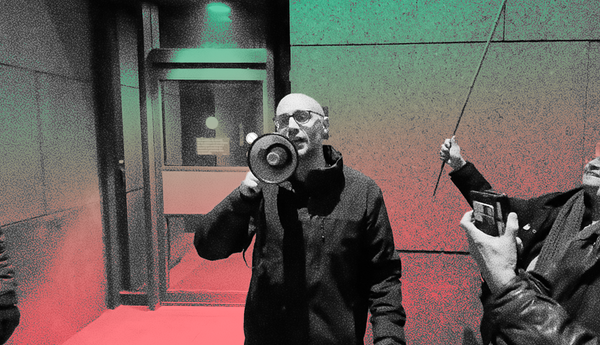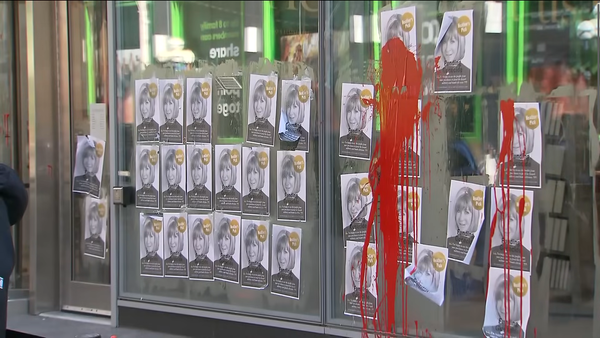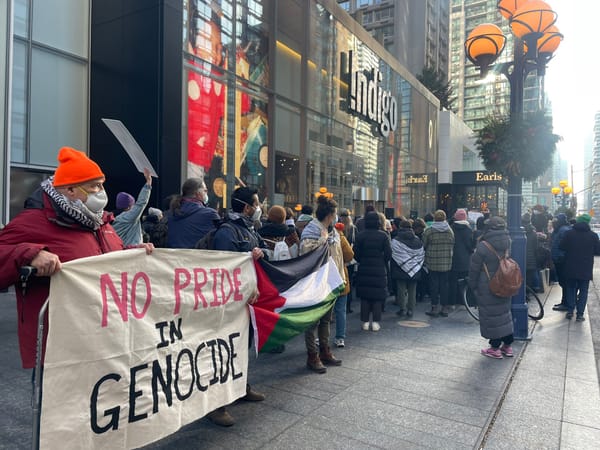Torontonians have recently been bombarded with news stories about violence on and around the city’s public transportation system, the Toronto Transit Commission (TTC).
In just the past two weeks, these stories have included: a man trying to push someone onto subway tracks, a TTC bus driver being shot by a BB gun, two TTC operators being attacked by several youths, a woman being stabbed and slashed multiple times on a streetcar, two TTC employees being chased by a man wielding a syringe, a teen being stabbed on a TTC bus, a purse snatching, a TTC passenger being shot with a BB gun, another TTC passenger being attacked by several youths and a man attacking several people on a streetcar.
The constant deluge of news describing violent incidents on the TTC seems to have helped cause panic and fear among many residents within the city. This is evidenced by the countless discussions happening on various social media platforms, the steady stream of articles and videos about people choosing to no longer use public transit, and anecdotal experience as well.
This is all bad news for many different, and sometimes overlapping, groups of people and organizations within the city. It is, however, good news for one organization: the Toronto Police Service (TPS).
Before I jump into why that’s the case, I want to take a closer look at the supposed skyrocket in violence on the TTC.
This violence can be measured in three different ways: 1) the number of actual violent incidents that occur; 2) the number of these incidents reported to the TPS; 3) the number of these incidents that get reported on by the media. In theory, a change in the number of violent incidents will mean a change in the number of police reports and a change in media reporting. That’s often not the case.
Two separate years could see the same number and severity of violent incidents occur on the TTC with the public getting a wildly-varying impression of what’s actually going on in each one based on how police and media respond. For example, in year one, the TPS could only share the most serious of incidents to its social media channels. Because local media outlets often rely heavily on police reports to inform their coverage, this TPS decision could lead to a limited number of news stories about violent incidents on the TTC. In year two, the TPS could decide to share a far broader range of incidents, and the media could choose to follow suit.
In short, the perception of the TTC as a safe or violent place doesn’t depend exclusively, or even primarily, on the actual number of violent incidents, but rather on how much attention said incidents receive and how they’re framed.
A Rise In Violence?
The last two months have been an incredible example of how the media can contribute to creating the perception of the TTC as an unsafe place, regardless of if that’s actually the case or not.
I searched the Canadian Newsstream database, which contains decades of archived issues of dozens of Canadian newspapers, for articles containing the words “TTC” and “violence.” I found that in 2019, 2020 and 2021, there were 82, 93, and 63 results containing both words, respectively. In 2022, this number jumped to 191, with 72 of them coming in December (compared to just 21 in the prior four months). The number skyrocketed this January, with more than 180 results being returned in the search for this month alone as of earlier today. If you applied this rate to the rest of the year, it would mean a total of more than 2,100 results in 2023 (compared to fewer than 100 in all but one of every year since 2010).
These numbers don’t always correspond to the reported number of violent incidents. For example, the TTC reported 735 offences against customers in 2020 compared to 666 in 2019, with just half the ridership. That’s an increase of more than 100 per cent if you take the ridership numbers into account. And yet, the total number of news articles mentioning such offences went up by just about 13 per cent. In 2021, the number of offences reported was 734, but news articles mentioning TTC violence actually dropped by about a third.
There’s some statistical evidence that the number of violent incidents did go up notably in 2022. In December, the Toronto Star wrote that the TTC reported 451 offences in the first half of the year, which, if the rate continued, would mean about 900 total in 2022. This is an 18 per cent increase from 2021. And yet, my newspaper database search found an increase in article results of more than 300 per cent from 2021 to 2022.
These numbers aren’t in sync. There’s an active choice being made at media outlets to use disproportionately more resources covering TTC violence in recent months than prior years, which has helped create the perception of an unprecedented wave of crime.
How Do Cops Benefit?
Now I want to circle back to what I referred to earlier, with the supposed rise in violence being good news for the TPS.
In December 2022, the month where Toronto Mayor John Tory was deliberating how to shape the city’s proposed budget for 2023, the city saw a change in TPS chiefs. James Ramer stepped down as interim chief of police, and Myron Demkiw stepped up. Here’s an excerpt from the Star’s reporting on the December 19 transition ceremony:
“In an emotional speech, Ramer thanked colleagues and relatives while reinforcing the importance of ‘sustained police funding.’ ‘I have seen firsthand how flat budgets lead to reduced staffing numbers and ultimately a degradation of service to the community,’ said Ramer […] Mayor John Tory, a past member of the Toronto police board, said the force will be making a request for a budget increase in 2023. Asked why Toronto police will be asking for more money, Demkiw said the budget was still a ‘work in progress.’”
Then, on January 3, Tory announced a proposal of a $48.3 million budget increase for the TPS, in part to hire around 200 more police officers. He specifically mentioned incidents on the TTC during this announcement. A few days later, the Toronto Police Services Board (TPSB) voted unanimously in favour of the proposal.
On January 26, amid skyrocketing news reports of TTC violence, Demkiw held a press conference with Tory (formerly on the TPSB), the TTC’s CEO and the TTC’s chairman (formerly a TPS cop), among others. He announced that, effective immediately, the TPS would aim to have an additional 80+ officers working on the TTC per day, in a primarily overtime capacity. This announcement came as a result of meetings held between Demkiw, Tory and TTC CEO Rick Leary.
One reporter asked Tory, “Is this a bottomless cup when it comes to dollars? How much is it going to cost?” He replied, while smirking, stating: “I will just say that that matter came up last night when I was both talking to Mr. Leary and the police chief and they were discussing which budget it would come out of, and I said, ‘Well, actually, at the end of the day it all comes out of the same place, which is the City of Toronto taxpayers, hopefully with some help from the other governments.’ But I just said to them, ‘That’s not the issue here.’” In other words, money won’t be an issue in this next round of gifting TPS employees with plush overtime shifts.
However, not all of these moves are done deals yet. Tory’s proposed budget first needs to be approved by Toronto’s city council, which will vote on the matter on February 14. The council needs to be convinced that the increased funds allocated to the TPS should remain in the budget. A surge in violence on the TTC is certainly a powerful motivating factor to go along with the budget, and indeed, Tory has said that he is disappointed councillors who have expressed hesitation about the decision would supposedly “rather play politics than work together on immediate and long-term solutions to crime.” Tory is effectively portraying those who question further funding to the police as not caring about Torontonians.
In between Tory’s announcement of the budget and the vote, the council’s budget committee will hear input from all sorts of people and groups at public meetings, intended to help shape how they respond to it. There will also, of course, be pressure from constituents exerted in other ways.
After years of protests against police in the city, and the TPS’ special TTC unit being disbanded in 2017, this surge in violence is useful. The response of many, particularly those from more privileged backgrounds, will be and has been to think of police first (and perhaps exclusively).
You’ll notice that nowhere in this article have I explained the case the police have made for why funding them more will fix the problem they’re discussing. That’s because they haven’t really even bothered to make the case. Demkiw was asked about this directly at the press conference, and his answer was that more police funding is useful because he has noticed people seem to feel more comfortable when he uses transit in uniform.
So, a personal observation from one highly-biased official is enough to award the TPS with nearly $50 million more in funding? What about all of the other evidence that says further funding the police won’t help the problem — that they’re part of the problem? What about the fact that, according to the TPS themselves, they’ve already been stepping up patrols throughout the supposed wave of violence, essentially admitting they haven’t helped? What about the fact that the TPS’ Transit Patrol Unit was disbanded in 2017, with the force stating it “is no longer required since the Toronto Transit Commission now has a highly capable Special Constable Program in place”? What about the fact that earlier in January, Tory proposed using some of the TTC budget to hire 50 more of these special constables? None of this seems to matter.
Tory claims that funding police and funding the sort of social services that try to treat root causes of crime doesn’t have to be an either-or choice. However, when he talks about spending on these social services (which he claims make up about $100 million of the proposed budget, or, in other words, less than 10 per cent of what is allocated to police), he portrays them as “investments” that need to be made “effectively.” When it comes to police, there’s no such apparent discretion. Money is just thrown at them, regardless of what harms they cause, or problems they may fail to solve.
I want to be very clear about what I am and am not arguing here.
I’m not arguing that people around the city haven’t had direct experiences that have made them less eager to use the TTC or to choose to avoid it entirely where possible. I’m not arguing that police forces have fabricated violent incidents. I’m not arguing that the police are directly telling media outlets to run more stories about violent incidents. I’m not arguing that the media should never report about violence on the TTC.
I am arguing that the police currently have a vested interest in making the TTC appear to be a dangerous place in need of saving. I am arguing that the media has chosen to spend a disproportionate amount of resources on reporting about TTC violence (an issue compounded by their reliance on police in the first place). I am arguing that this media coverage can make people more scared to take the TTC than they would otherwise be. I am arguing that this fear is useful for the police. I am arguing that having more police on the TTC won’t fix existing problems, and will make others worse.
Earlier, I mentioned that the current prevailing narrative of violence on the TTC is bad for many groups. It is bad for riders, who will see TTC funding that could be used in better ways being allocated to cops, special constables and security guards instead. It is bad for the people, more likely to be marginalized in some way, who will be victimized by these cops, constables and security guards. It is bad for the state of the TTC, as reduced service and higher fares will make the experience of using public transit worse, which could initiate a spiral of defunding. It is bad for the image of public transit, as the framing of the TTC as a violent, unsafe place may persist regardless of the reality on the ground now or in the future, doing long-term damage to ridership numbers. It is bad for our city, as a mass shift to public transit and away from car dependence is what’s needed.
This is bad news for almost all of us. There’s a lot riding on the future of the TTC, for so many people. We can’t allow it to be sabotaged to provide more jobs and overtime pay cheques for cops.







